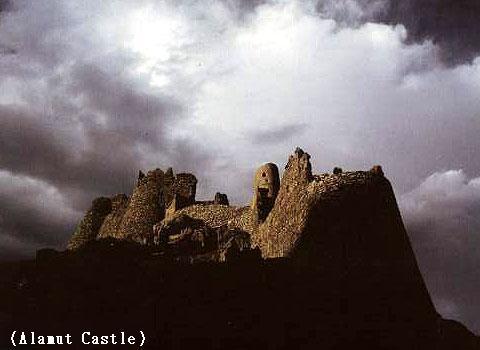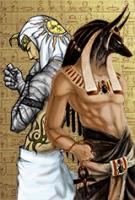





Now More From The DM's Road To Jerusalem





]]>http://www.twcenter....pictureid=14461]]>
 Нажмите, чтобы прочитать
Нажмите, чтобы прочитатьSect inside Shi'i Islam, more specifically the Nizari Isma'ilis, in the period from the 11th to the 13th century. Most significantly, the Assassins are famous for their fearless murders especially during the times of the Crusades.
There are many legends connected with the Assassins, and many are of dubious origin, more a result of medieval European story tellers' fantasy than facts (among these story tellers is Marco Polo).
 Нажмите, чтобы прочитать
Нажмите, чтобы прочитатьhttp://static.flickr.com/107/256579538_b1c7ce3e15.jpg
GEOGRAPHY:
[picture of the map]
 Нажмите, чтобы прочитать
Нажмите, чтобы прочитать Нажмите, чтобы прочитать
Нажмите, чтобы прочитать"The Alborz Mountains, which rise to a maximum height of over six-thousand meters in the volcanic Mount Damavand, constitute a natural barrier between the Caspian and the vast gently tilting plateau which constitutes Central Iran. Although not distant as the crow field from Tehran, this mountainous area has always been and still is remote. It was presumably for this reason that many shi-ite sects and fleeing Isma'ilis and other Moslem heretics had... for many centuries taken refuge in the mountain kingdom of ancient Daylam."
ALAMUT
[picture of the fortress]

The Alamut valley lies in the Alburz mountain range, in the north of modern-day Iran, half way between Tehran and the Caspian Sea. The castle is built on a narrow ridge on top of a high rock in the heart of the mountains and dominating an enclosed valley, about 25 kilometres in length. More than 6,000 feet above sea level, the castle lies several hundred feet above the base of the rock, and could only be reached by a narrow, steep and winding path. The approach to the rock was through the narrow gorge of the Alamut river, between perpendicular and sometimes overhanging cliffs.
The steep defile at the western entrance to the valley is also defended by two forts constructed on each side of the 350 metres high cliffs. The eastern end of the valley is completely blocked by the Alamkum/Takht-e-Suleyman mountain knot. To the north and south are mountain ranges up to 3,500 metres.
HISTORY OF THE ASSASSINS (HASHSHASHIN)
 Нажмите, чтобы прочитать
Нажмите, чтобы прочитать Although known as early as the 8th century, the foundation of the Assassins is usually marked as 1090Events Granada captured by Yusuf Ibn Tashfin, King of the Almoravides Beginnings of troubadours in Provence Bejaia becomes the capital of the Hammadid dynasty in Algeria Births William of Malmsbury Saint Bernard of Clairvaux Saint Famianus Eliezer ben Nat when Hasan-i Sabbah established his stronghold in the mountains south of the Caspian Sea at Alamut. A Yemeni emigrant and an Ismaili Shiite, Hasan set the aim of the Assassins to destroy the power of the Abbasid Caliphate by murdering its most powerful members. Hasan ibn Sabbah was also known as "The Old Man of the Mountain", however, this is likely to have been a mistake in translation, since "Old Man" is the literal translation of "Sheikh". Much of the current western lore surrounding the Assassins stems from Marco Polo's supposed visit to Alamut in 1273, which is widely considered mythical (especially as the stronghold was allegedly destroyed by the Mongols already in 1256).
The group inspired an aura of fear out of all proportion to their power. The members were organized into rigid classes, based upon their initiation into the secrets of the order. The devotees constituted a class that sought martyrdom and followed orders with unquestioned devotion, orders which included assassination. Because of the secretive nature of the order, it has often been invoked in conspiracy theories.
Most of the victims of the Assassins were Sunni Muslims. There were some extremely highly placed victims including Nizam-ul-Mulk. Christians were largely untouched by the depredations of the Assassins; it was not until the middle of the 12th century that they had even really heard of them, although Conrad of Montferrat - the King of Jerusalem - was a victim (the Assassins may have even been hired by Richard the Lionheart).
The power of the Hashshashin was destroyed by the Mongol warlord Hulagu Khan, but several smaller sects remain to this day, such as the sect led by the Aga Khan. During the Mongol assault, the library of the sect was destroyed, and thus much information about them was lost.
The group inspired an aura of fear out of all proportion to their power. The members were organized into rigid classes, based upon their initiation into the secrets of the order. The devotees constituted a class that sought martyrdom and followed orders with unquestioned devotion, orders which included assassination. Because of the secretive nature of the order, it has often been invoked in conspiracy theories.
Most of the victims of the Assassins were Sunni Muslims. There were some extremely highly placed victims including Nizam-ul-Mulk. Christians were largely untouched by the depredations of the Assassins; it was not until the middle of the 12th century that they had even really heard of them, although Conrad of Montferrat - the King of Jerusalem - was a victim (the Assassins may have even been hired by Richard the Lionheart).
The power of the Hashshashin was destroyed by the Mongol warlord Hulagu Khan, but several smaller sects remain to this day, such as the sect led by the Aga Khan. During the Mongol assault, the library of the sect was destroyed, and thus much information about them was lost.
THE LEGEND OF THE OLD MAN OF THE MOUNTAINS
OLD MAN OF THE MOUNTAINS
[Picture Hasan-i Sabbah]
 Нажмите, чтобы прочитать
Нажмите, чтобы прочитатьhttp://www.twcenter.net/forums/picture.php?albumid=720&pictureid=10051
 Нажмите, чтобы прочитать
Нажмите, чтобы прочитать In 1074 "the Armenian general Badr al-Jamali traveled with his army from Syria to Cairo and took effective control. From that moment, the power of the caliph was extremely limited and the real ruler of the state was the commander-in-chief of the army. the last caliphs were little more than figureheads."
"On the death of the Caliph al-Mustansir in 1094, the new commander opposed the Caliph's own designation of his son Nizar as caliph and placed Nizar's brother al-Musta'li on the throne... The Isma'ilis in the East [Persia] refused to acknowledge al-Musta'li and broke off relations with the dynasty in Cairo."
"The dissenting group proclaimed their allegiance to the by-passed Caliph Nizar, and it is for this reason that members of the sect which became known to history as The Assassins were first known as the Nizari Isma'ilis."
"Hasan-i Sabbah was a revolutionary of genius who devised and put into practice the 'new' preaching or da'wa of the Nizari Isma'ilis, which was to replace the 'old' da'wa of the Fatimid Isma'ilis at Cairo... It is likely that he was born around 1060 in Qom, one-hundred-and-fifty kilometers south of modern Tehran."
"He had a fine mind, an excellent knowledge of theology, and evidently possessed the phenomenal strength of will necessary to pursue his ideal for so many years... We can imagine him converting the people of Daylam just as he had himself been converted, by patiently digging away at a potential proselyte's religious doubts until they were strong enough to admit the possibility of an alternative."
"Hasan-i Sabbah had managed through careful theological argument and relentless logic applied to the Shi'a doctrines, to create a powerful sectarian sense of community based on the traditional secrecy and conspiratorial nature of Isma'ilism."
Hassan i Sabbah showed his followers Heaven at Alamut; when initiates were brought to him, they were drugged and taken to a part of the mountain sculpted to resemble the Muslim ideas about Heaven. Houris were there to introduce the intiate to sexual pleasures. Food & drink flowed freely. Hassan i Sabbah had only to tell the initiate that those who died in his service were guaranteed to return to Heaven after death. With that prospect like ahead of them, the Assassins were willing to follow Alamut's orders blindly, even to the point of denying their religious affiliations when asked (rare at the time).
"On the death of the Caliph al-Mustansir in 1094, the new commander opposed the Caliph's own designation of his son Nizar as caliph and placed Nizar's brother al-Musta'li on the throne... The Isma'ilis in the East [Persia] refused to acknowledge al-Musta'li and broke off relations with the dynasty in Cairo."
"The dissenting group proclaimed their allegiance to the by-passed Caliph Nizar, and it is for this reason that members of the sect which became known to history as The Assassins were first known as the Nizari Isma'ilis."
"Hasan-i Sabbah was a revolutionary of genius who devised and put into practice the 'new' preaching or da'wa of the Nizari Isma'ilis, which was to replace the 'old' da'wa of the Fatimid Isma'ilis at Cairo... It is likely that he was born around 1060 in Qom, one-hundred-and-fifty kilometers south of modern Tehran."
"He had a fine mind, an excellent knowledge of theology, and evidently possessed the phenomenal strength of will necessary to pursue his ideal for so many years... We can imagine him converting the people of Daylam just as he had himself been converted, by patiently digging away at a potential proselyte's religious doubts until they were strong enough to admit the possibility of an alternative."
"Hasan-i Sabbah had managed through careful theological argument and relentless logic applied to the Shi'a doctrines, to create a powerful sectarian sense of community based on the traditional secrecy and conspiratorial nature of Isma'ilism."
Hassan i Sabbah showed his followers Heaven at Alamut; when initiates were brought to him, they were drugged and taken to a part of the mountain sculpted to resemble the Muslim ideas about Heaven. Houris were there to introduce the intiate to sexual pleasures. Food & drink flowed freely. Hassan i Sabbah had only to tell the initiate that those who died in his service were guaranteed to return to Heaven after death. With that prospect like ahead of them, the Assassins were willing to follow Alamut's orders blindly, even to the point of denying their religious affiliations when asked (rare at the time).
THE MYSTERIES OF THE ASSASSINS
 Нажмите, чтобы прочитать
Нажмите, чтобы прочитать"True, in this myth some aspirant disciples may be ordered to fling themselves off the ramparts into the black--but also true that some of them will learn to fly like sorcerers." The Assassins lived in a world beyond Divine Law where no one interposed between themselves and God--a world where, by sacrificing themselves, they became free...
 Нажмите, чтобы прочитать
Нажмите, чтобы прочитатьhttp://www.twcenter.net/forums/picture.php?albumid=720&pictureid=10742
ASSASSINS SECRET DOCTRINES
They had a system of terrorists as well as secret agents positioned in enemy camps and cities. The Assassins often worked closely with certain leaders of Muslim states, as their services were attractive: no one else was better able to kill important persons in enemy states. They were for long periods allied with the Christian crusaders, not because the Christians sympathized with them, but because they had common enemies.
One of the most important Muslim allies of the Assassins was the Seljuq ruler of Aleppo, Ridwan. Through this cooperation, they were able to establish themselves in the Syrian mountains, where several fortresses were erected. Without being recognized in the same way as other temporary states, the Assassins had in reality, their own state here. But the Assassins's influence over Aleppo came to be immense, and they effectively ruled the politics and economy of the city and its surroundings for a couple of decades.
Even Saladin came to treat the Assassins as allies, although he intended initially to eliminate them. The reason for this alliance, was that Saladin, following two assassination attempts, feared for his own life, and had more imminent enemies.
The Assassins were ranked according to intelligence, courage and trustworthiness. They underwent intense education as well as physical training.
http://www.twcenter.net/forums/picture.php?albumid=720&pictureid=10636
When the Assassins were out on mission, they generally worked alone. Rarely did two or more of them work together. They dressed up as tradesmen or ascetic religious men, and spent a good deal of time in a city, in order to get well-acquainted with the houses and streets, as well as the daily routines of the future victim. The actual murder was performed with a dagger and in public, often inside the mosque on a Friday. By doing it all in public, the information about the deed was soon well known, and people were frightened. In general, the Assassin murderer himself was killed immediately thereafter by guards of the victim.
THE POWER OF THE ASSASSINS
 Нажмите, чтобы прочитать
Нажмите, чтобы прочитать"The power of Hasan-i Sabbah himself, and the fanatical devotion of the fida'i, ultimately derived from this categorical insistence on the transcendental nature of God. Such an absolute God, and absolute imam, demands absolute faith and obedience."
Group A: descended from Ali and Nizar
1 Imam
Group B: fully initiated
2 Da'i 'd-Du'at (Chief Da'i)
3 Du'i 'l-Kabir (Superior Da'i)
4 Du'i (ordinary Da'i)
Group C: partly initiated
5 Rafiq (comrade)
Group D: uninitiated
6 Lasiq (adherent)
7 Fida'i (self-sacrificer, the destroying angels)



 Тема закрыта
Тема закрыта








